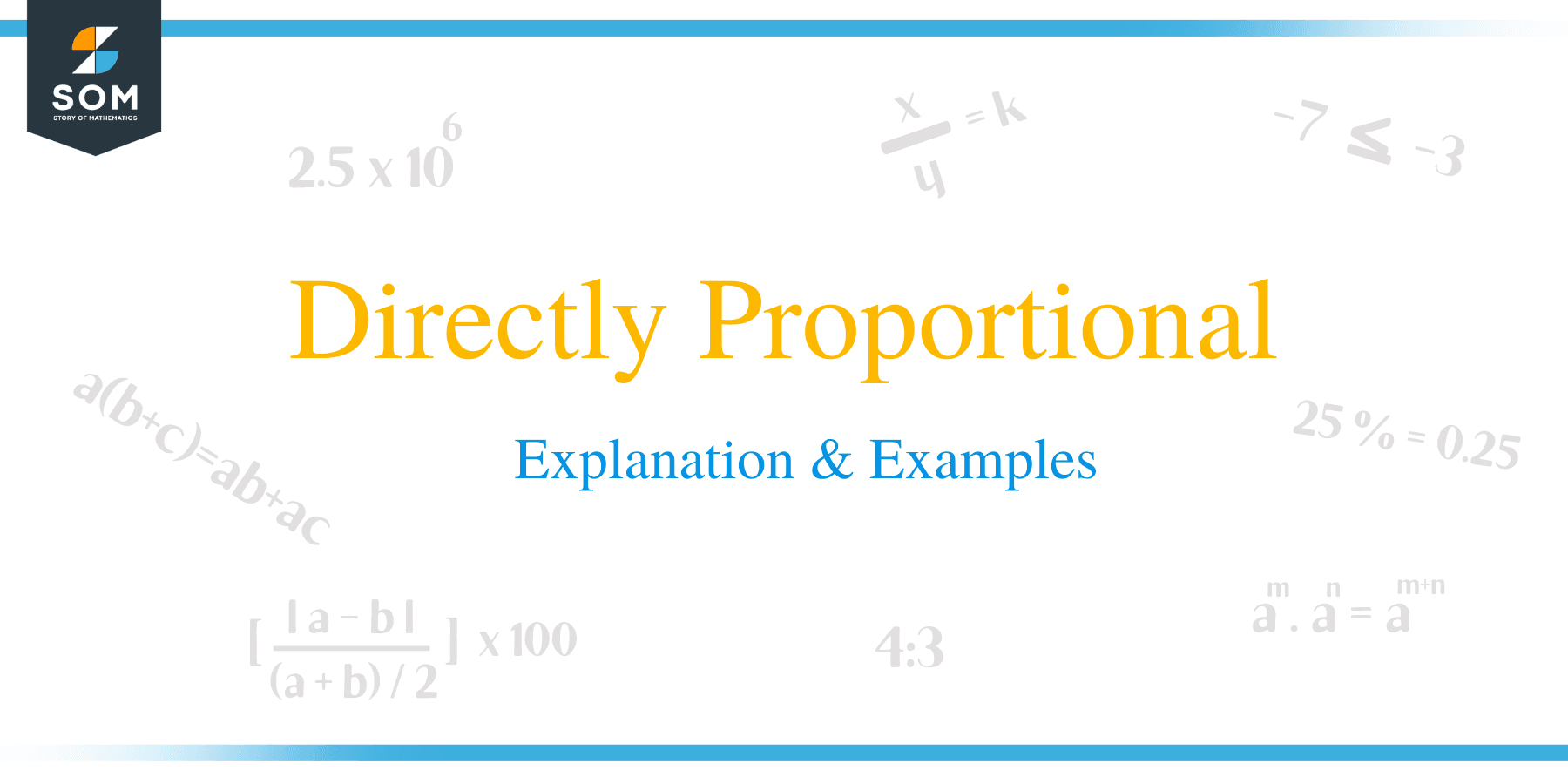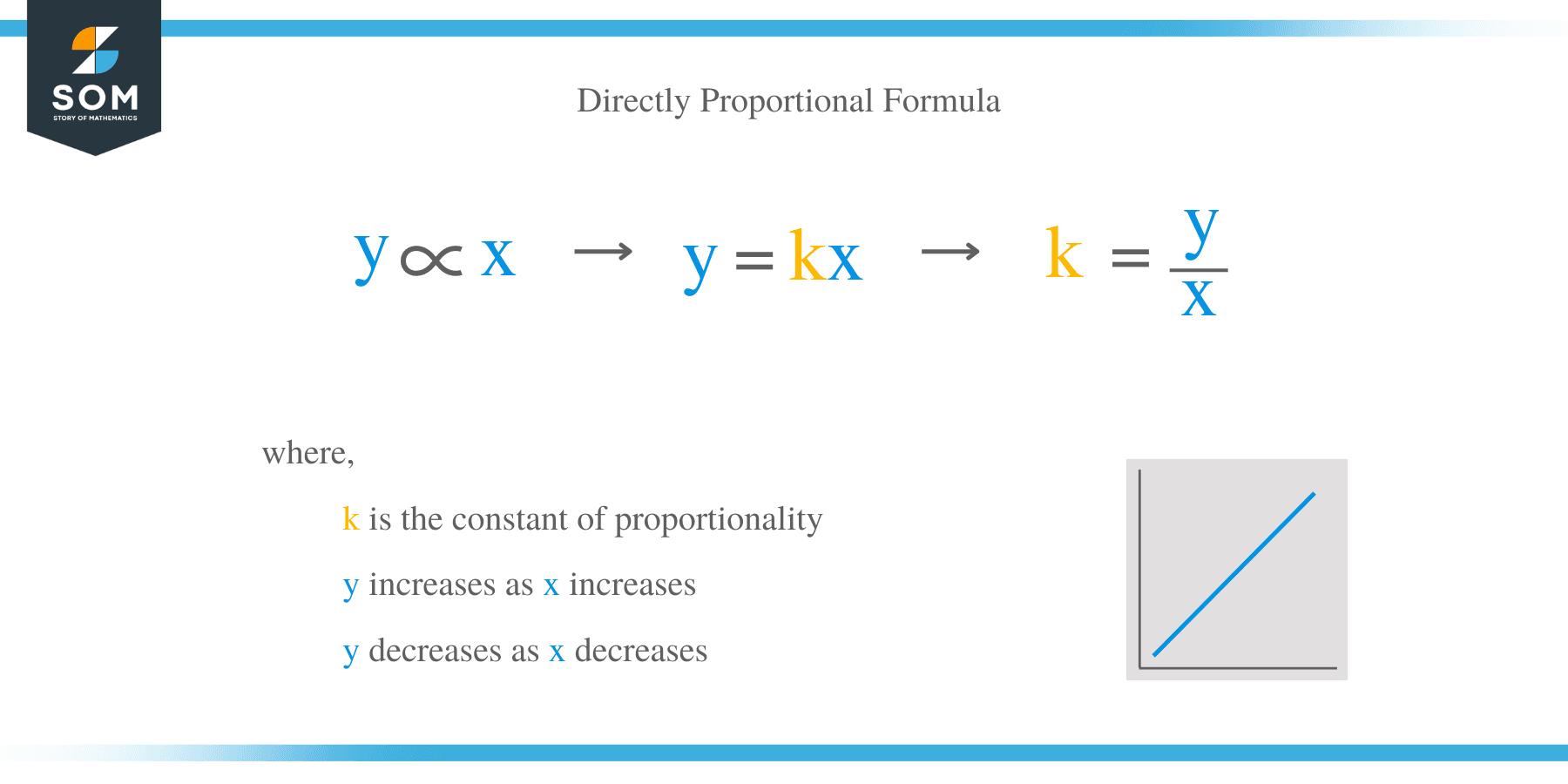Directly Proportional – Explanation & Examples
 What does Directly Proportional Mean?
What does Directly Proportional Mean?
Direct proportion is the relationship between two variables whose ratio is equal to a constant value. In other words, direct proportion is a situation where an increase in one quantity causes a corresponding increase in the other quantity, or a decrease in one quantity results in a decrease in the other quantity.
Sometimes, the word proportional is used without the word direct, just know that they have a similar meaning.
Directly Proportional Formula
Direct proportion is denoted by the proportional symbol (∝). For example, if two variables x and y are directly proportional to each other, then this statement can be represented as x ∝ y.
When we replace the proportionality sign (∝) with an equal sign (=), the equation changes to:
x = k * y or x/y = k, where k is called non-zero constant of proportionality.
In our day-to-day life, we often encounter situations where a variation in one quantity results in a variation in another quantity. Let’s take a look at some of the real-life examples of directly proportional concept.
- The cost of the food items is directly proportional to the weight.
- Work done is directly proportional to the number of workers. This means that, more workers, more work and les workers, less work accomplished.
- The fuel consumption of a car is proportional to the distance covered.

Example 1
The fuel consumption of a car is 15 liters of diesel per 100 km. What distance can the car cover with 5 liters of diesel?
Solution
- Fuel consumed for every 100 km covered = 15 liters
- Therefore, the car will cover (100/15) km using 1 liter of the fuel
If 1 liter => (100/15) km
- What about 5 liters of diesel
= {(100/15) × 5} km
= 33.3
Therefore, the car can cover 33.3 km using 5 liters of the fuel.
Example 2
The cost of 9 kg of beans is $ 166.50. How many kgs of beans can be bought for $ 259?
Solution
- $ 166.50 = > 9 kg of beans
- What about $ 1 => 9/166.50 kg
Therefore the amount of beans purchased for $259 = {(9/166.50) × 259} kg - =14 kg
Hence, 14 kg of beans can be bought for $259
Example 3
The total wages for 15 men working for 6 days are $ 9450. What is the total wages for 19 men working for 5 days?
Solution
Wages of 15 men in 6 days => $ 9450
The wage in 6 days for 1 worker = >$ (9450/15)
The wage in 1 day for 1 worker => $ (9450/15 × 1/6)
Wages of 19 men in a day => $ (9450 × 1/6 × 19)
The total wages of 19 men in 5 days = $ (9450 × 1/6 × 19 × 5)
= $ 9975
Therefore, 19 men earn a total of $ 9975 in 5 days.

